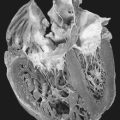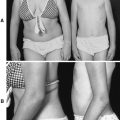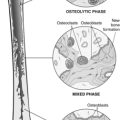39. Gaucher’s Disease
Definition
Gaucher’s disease is an autosomal recessive inherited disorder resulting from deficiency of acid beta-glucosidase. It is characterized by thrombocytopenia, anemia, hepatosplenomegaly, and bone pain.
Incidence
The incidence of Gaucher’s disease in non-Jewish populations is 1:40,000. For the Ashkenazi Jewish population, the carrier rate is 1:15, whereas the disease rate is 1:855. In those of Norrbottnian Swedish descent, the incidence of Type III Gaucher’s disease is 1:50,000.
Etiology
All three types of Gaucher’s disease are caused by deficiency of the acid β-glucoside as the result of a mutation in the structural gene providing the enzyme encoding.
Subtypes of Gaucher’s Disease
• Type I: Adult/non-neuronopathic form
• Type II: Infantile/acute neuronopathic form
• Type III: Juvenile/Norrbottnian form
Signs and Symptoms
• Ataxia
• Dementia
• Fatigue
• Generalized weakness
• Hepatosplenomegaly
• Pathologic fractures
• Psychomotor retardation
• Seizures
• Severe bone and joint pain
• Spasticity
• Strabismus
• Trismus
Medical Management
The primary focus of medical care for the patient with Gaucher’s disease is administration of the enzyme therapy agent imiglucerase. Both visceral and hematologic manifestations of Gaucher’s disease respond relatively quickly to enzyme replacement therapy; however, skeletal manifestations of the disease are slow to respond to enzyme therapy. Enzyme replacement therapy is usually directed by a metabolic disease specialist frequently working closely with a hematologist.
Splenomegaly may be treated surgically by splenectomy. This surgical intervention is used less frequently since the development of enzyme replacement therapy.
Not all patients respond favorably to enzyme replacement therapy, particularly those with portal hypertension, extensive splenic infarction, extensive splenic fibrosis, pulmonary manifestations, hematologic malignancy, and/or cirrhosis.
Hip arthroplasty, total or hemi, may be needed secondary to skeletal manifestations of this disease. Prudence dictates re-evaluation of the need for such surgery after several months of enzyme replacement therapy.
Patients with documented splenomegaly are advised to avoid contact sports and other activities/avocations with greatly elevated risk of splenic rupture.
Complications
• Anemia
• Avascular necrosis
• Bony infarcts
• Cirrhosis (rare)
• Esophageal varices
• Fibrotic parenchymal infiltrates
• Hepatomegaly
• Hypergammaglobulinemia
• Impaired neutrophil chemotaxis
• Intrapulmonary vascular dilation
• Leukopenia
• Portal hypertension
• Pulmonary infiltrates
• Splenic rupture
• Thrombocytopenia
• T-lymphocyte deficiency
Anesthesia Implications
Glycosphingolipid deposits in the head and neck may encroach on the oropharynx and trachea and may contribute to a smaller-than-normal mouth, rendering direct laryngoscopy and airway management difficult. These deposits may cause the glottis and/or trachea to be smaller than expected, requiring the anesthetist to reconsider the size of the endotracheal tube and place a smaller one. Placement of a laryngeal mask airway (LMA) may be impeded because of the patient’s small mouth opening.
A patient with the infantile/Type II variant of Gaucher’s disease may be severely developmentally delayed and also prone to stridor. Hepatosplenomegaly can be very significant in the young patient. The prognosis for the patient with infantile/Type II Gaucher’s disease is very poor, with rapid progression culminating in death, usually within 2 years.
Gastroesophageal reflux, aspiration, and the continuing potential for aspiration are closely associated with both Type II and Type III Gaucher’s disease; therefore rapid sequence induction is in order for the provision of general anesthesia.
As with any anticipated difficult airway scenario, the difficult airway cart should be readily available and the anesthetist with the most experience should be chosen to attempt intubation. Anesthestists should be prepared to provide postoperative ventilatory support to allow the patient the best opportunity to fully regain control of protective airway reflexes and to recover full muscle tone.
Regional anesthesia is an option for the patient and has been used successfully in the past.







